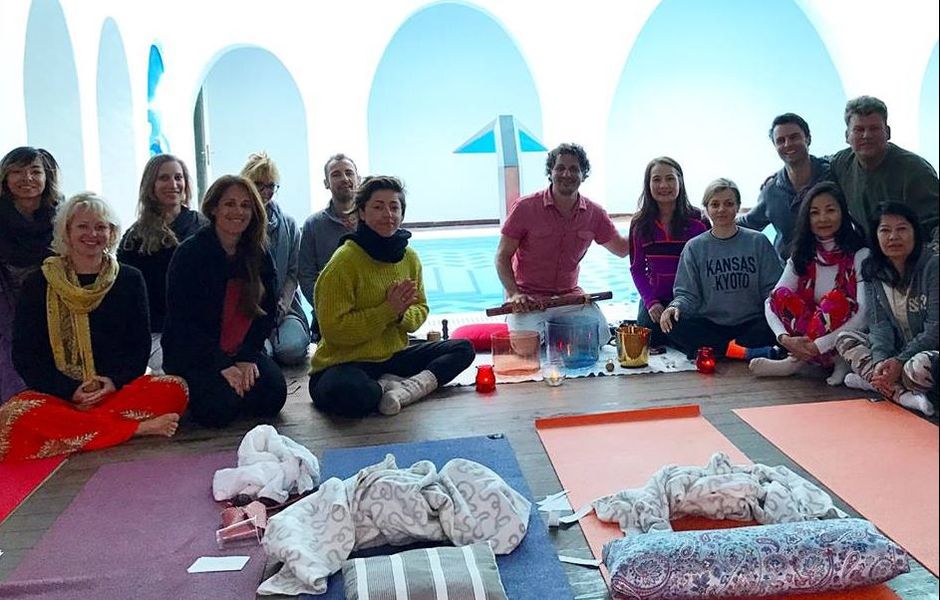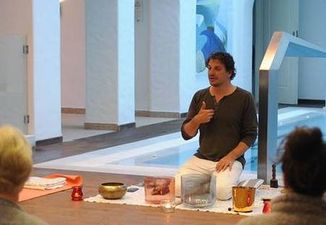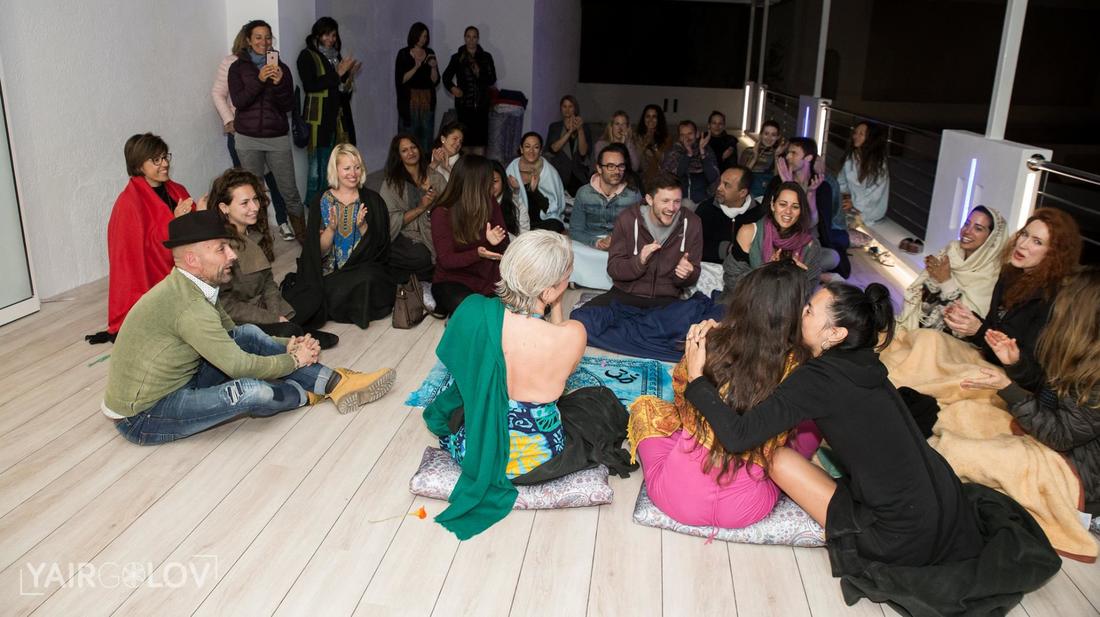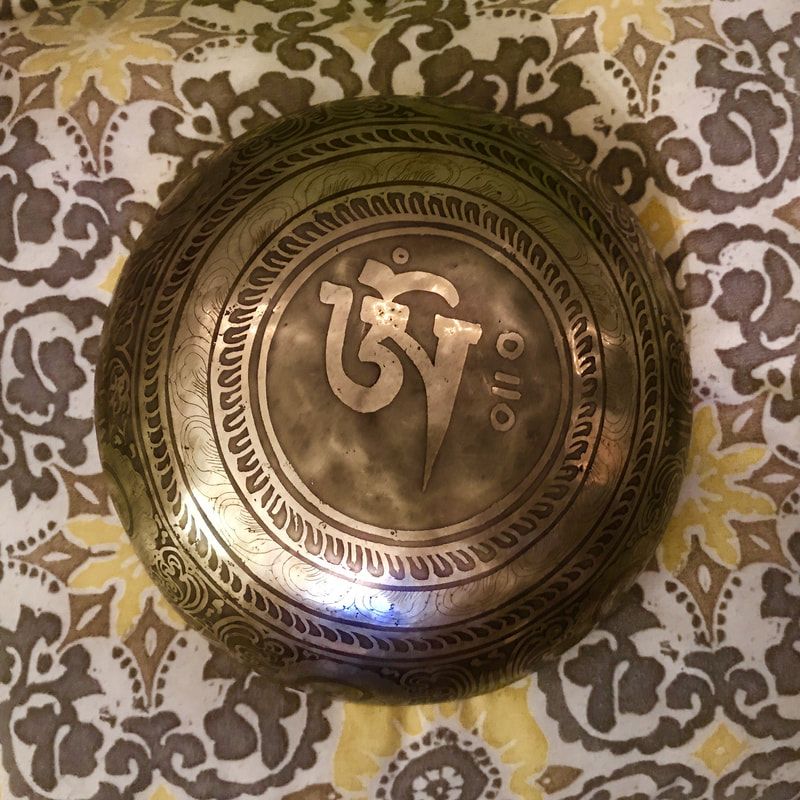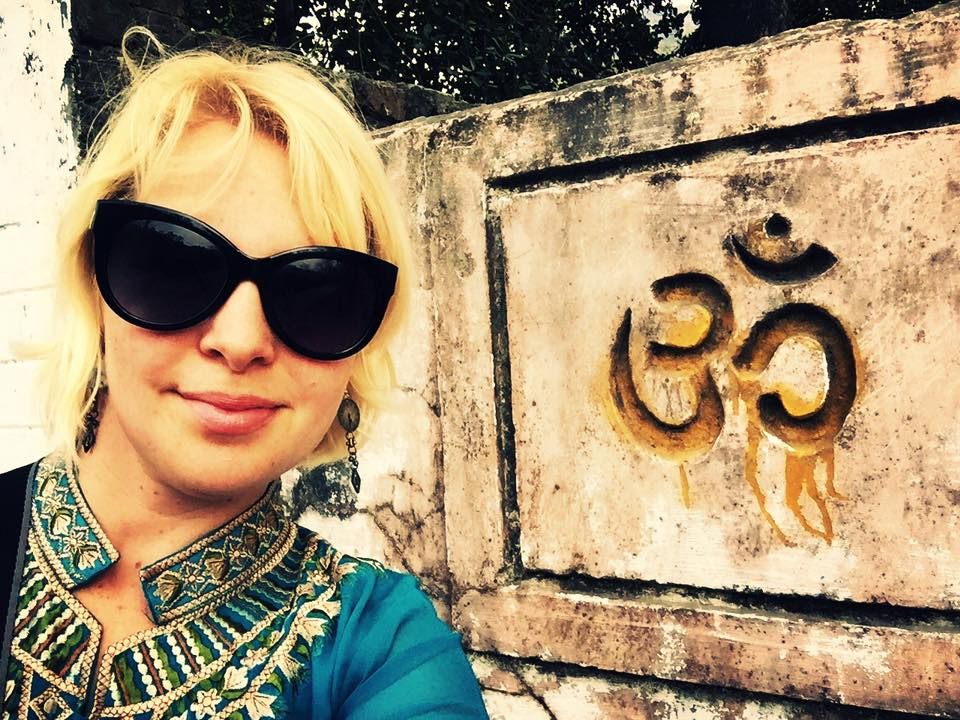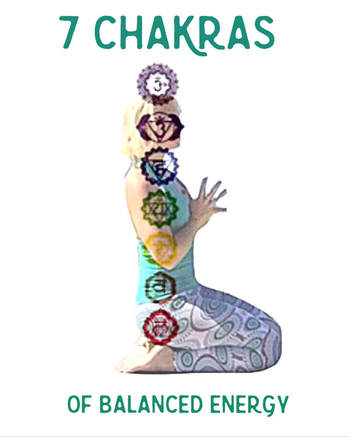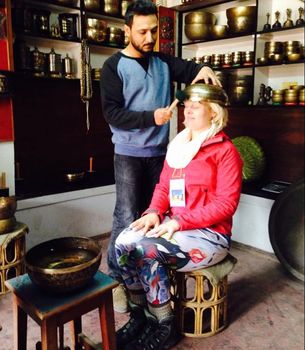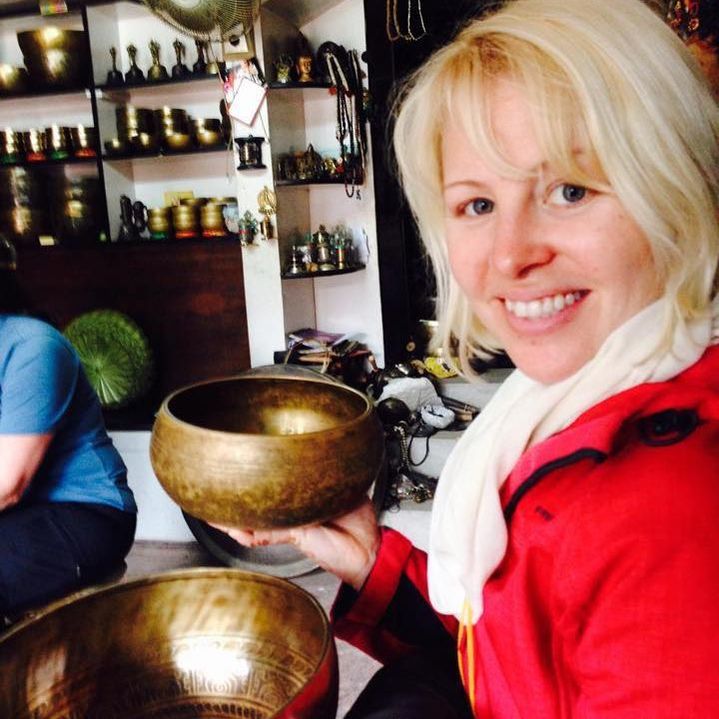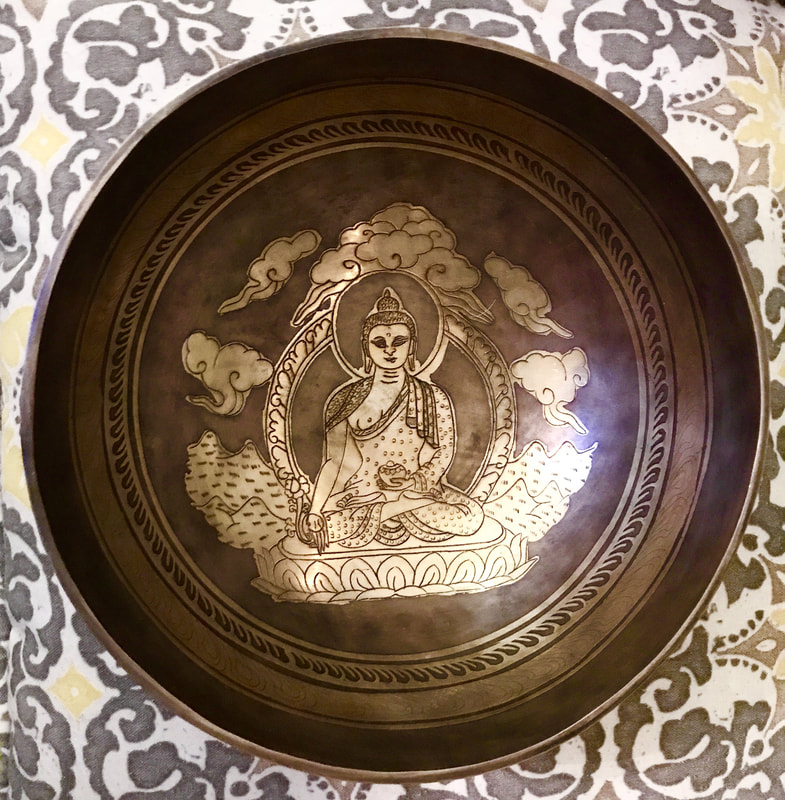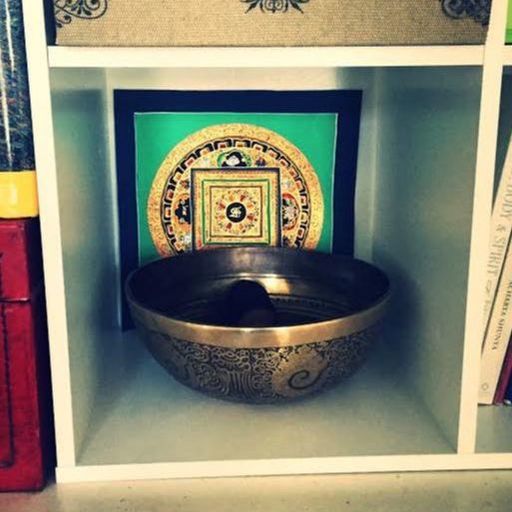Diiiinnnnnnggggg, Ding, Doooooonnnnongggg, Dong, Diiiiiinnnng, Doooooooonnnnnnng...
Rings of purple and gold outlined a bright white glowing circle. The white light grew, expanded, and faded out as a new outlined circle appeared in the center and began to expand as well. Although my eyes were closed, my entire body was filled with vibrations of warmth, love, and joy. A blissful smile expanded across my face.
Rings of purple and gold outlined a bright white glowing circle. The white light grew, expanded, and faded out as a new outlined circle appeared in the center and began to expand as well. Although my eyes were closed, my entire body was filled with vibrations of warmth, love, and joy. A blissful smile expanded across my face.
Digital Artwork by Hannah Faulkner
At this first annual Elysia Yoga Convention in Amorgos, Greece in April 2017, Yoga and Wellness leaders from around the world gathered to resonate together under a high frequency. Lying in the open space of sound, I felt a deep connection within my body. My mind was clear as it allowed the sound to penetrate every cell of every organ. This alignment was not only taking place within my body, but also within the whole room as David Kennet swarmed around us with crystal and metal Tibetan singing bowls, chimes, and dynamic shamanic chants.
Some may call this awakening, enlightenment, dharma or samadhi, but these moments of knowing are universally recognized as a profound transformation of consciousness. In this moment, I knew that I was re-aligning with my authentic and eternal essence.
David’s Soul Sounding Workshop “is a transmission of high vibrational energetic tones that help shift the listener into a deeper state of awareness, allowing you to re-member Home. Home is where the Heart is . . . where unconditional love, unlimited joy and peace reside.”
Twin Flames is a Yoga Apparel Company with some awesome phrases to keep you centered! Check out my new shirt and much more!
David’s Soul Sounding Workshop “is a transmission of high vibrational energetic tones that help shift the listener into a deeper state of awareness, allowing you to re-member Home. Home is where the Heart is . . . where unconditional love, unlimited joy and peace reside.”
Twin Flames is a Yoga Apparel Company with some awesome phrases to keep you centered! Check out my new shirt and much more!
Eysia Yoga Convention Closing Ceremony 2017
Photo Credit: Yair Go Love
Photo Credit: Yair Go Love
Likewise, the morning after the closing ceremony, many of us were on the ferry back to Athens. We rounded up for a meditation and singing. As we gathered, only the formation of a circle seemed rational. We held hands as we together sang the sacred sound of OM, our vibrational frequencies aligned. This community indeed felt like home.
Tibetan Symbol or Aum, the Sacred Sound
In Patanjali’s Yoga Sutras, Om or Aum represents universal consciousness. Because all other sounds emerged and are an extension of Aum, a yogi can make any sound a tool, such as their own voice or a bell, to reach the primal sound Aum. Great yogis believed sound was the ancient reality existing even before there were ears to receive it. Sound carries a spiritual weight more meaningful than other sensory properties like smell taste, and touch. Science supports this belief in revealing that sound is the first sense to come to a fetus in the womb and the last sense to go in death.
Hannah Faulkner with the Om or Aum symbol of sacred sound
Nada Yoga is a philosophy that the entire cosmos and all that exists in the cosmos, including human beings, consists of sound vibrations, called nāda. This concept holds that it is the sound energy in motion, rather than of matter and particles, which form the building blocks of the cosmos. Nada means flow of sound and Yoga means Union. Nada Yoga is the process of the union of the individual mind with cosmic consciousness through the flow of sounds. On the path of Nada Yoga, the body is healed, the mind recovers its balance and the person develops a deep sense of well-being. In this sense Nada Yoga works as medicine and therapy, helping a person to lead a healthy, happy and balanced life in the world.
Sound is also employed to raise the level of awareness of our energy centers called chakras. In Cusco, I had an Aura Cleansing at Paramatma Holistic Healing in which different sounds were chimed above each chakra and vibrations were harmonized.
Using sound to connect to a higher state of consciousness is a common practice of most spiritual traditions.
Historically, bells have been associated with religious rituals, and are still used to call communities together for religious services. Later, bells were made to commemorate important events or people and have been associated with the concepts of peace and freedom.
When I was visiting Kathmandu in Nepal (March 2017), on a tour with Mosaic Adventures, we were taken to a Tibetan Sound Bowl Shop. Bronze bells from Asia have been discovered as early as the 8th–10th century BC and singing bowls are thought to go back in the Himalayas to the 10th-12th century AD. Only a few pieces of art, dating from several centuries ago, depict singing bowls in detail, including Tibetan paintings and statues.
Typically, Tibetan Bowls are a type of bell, specifically classified as a standing bell, rather than a hanging inverted. These handmade antique bowls consist of a rim that vibrates to produce sound characterized by a fundamental frequency (first harmonic) and usually two audible harmonic overtones (second and third harmonic). Singing bowls are played by striking the rim with a padded mallet. They can also be played by the friction of rubbing a wooden, plastic, or leather-wrapped mallet around the rim to emphasize the overtones and a continuous 'singing' sound, as in David Kennet’s technique.
Historically, bells have been associated with religious rituals, and are still used to call communities together for religious services. Later, bells were made to commemorate important events or people and have been associated with the concepts of peace and freedom.
When I was visiting Kathmandu in Nepal (March 2017), on a tour with Mosaic Adventures, we were taken to a Tibetan Sound Bowl Shop. Bronze bells from Asia have been discovered as early as the 8th–10th century BC and singing bowls are thought to go back in the Himalayas to the 10th-12th century AD. Only a few pieces of art, dating from several centuries ago, depict singing bowls in detail, including Tibetan paintings and statues.
Typically, Tibetan Bowls are a type of bell, specifically classified as a standing bell, rather than a hanging inverted. These handmade antique bowls consist of a rim that vibrates to produce sound characterized by a fundamental frequency (first harmonic) and usually two audible harmonic overtones (second and third harmonic). Singing bowls are played by striking the rim with a padded mallet. They can also be played by the friction of rubbing a wooden, plastic, or leather-wrapped mallet around the rim to emphasize the overtones and a continuous 'singing' sound, as in David Kennet’s technique.
Singing bowls are used worldwide for meditation, music, relaxation, and personal well-being. The sound healer in the store demonstrated how to feel the vibrations of the Ancient Tibetan handmade antique bowls by turning it upside down, balancing on the crown of our head and striking the bowl on the outside in a clockwise tradition. I realized that I must bring one of these home with me, so I went on a search throughout town for the best one.
Today, antique and new bowls are widely used as an aid to meditation. They are also used in yoga, music therapy, sound healing, religious services, performance, and for personal enjoyment. Since I’ve been back from my journey around the world, every day when I sit down for meditation, I place the bowl upside-down on my head and chime it several times. My cat, Kiki comes running up to me and circles me counterclockwise a few times before settling into my lap with a deep purr. All of these vibrations calm my emotions and clear my thoughts, bringing me to a state of gratitude and peace.
In the same way, church bells are traditionally used to call worshipers to the church for a communal service, and to announce times of daily prayer, called the canonical hours. Historic bell towers exist throughout Europe. In Christianity, many Anglican, Catholic, and Lutheran churches ring their bells from bell towers three times a day, at 6 a.m., noon, and 6 p.m., summoning the Christian faithful to recite the Lord’s Prayer. The ringing of church bells is also believed to drive out demons, or darkness.
Walking through the road to Santiago in Spain, it is difficult to not to hear the lovely sounding of church bells swinging in a bell tower throughout the day. Michael S. Rose proclaims in his article, Bring Back the Bells and the Bell Tower Too, “A church should not only be seen, but heard… For the pilgrim in city or country, that distant sound of ringing may well be the first indication that his destination is not far off. He then looks forward to catching his first glimpse of the church tower or spire rising above the urban fabric or seeing the silhouette of the church building atop a distant hill. In fact, the bell tower is one of the primary vertical elements that draws the pilgrim to the church, not only by the sound of its bells but by its visual profile. Pointing upward to the heavens, it is a welcoming sign to pilgrims and tourists, parishioners and merchants alike.”
Indeed, the church bell towers often incorporate clocks to bring us back to the present moment. These chimes felt like the comfort of home throughout the Camino de Santiago. Please share, this sacred reminder to be present, with me on the Spiritual Trekking Adventure next summer, 2018 on the Meditative Yoga Pilgrimage in Northern Spain.

